
GE Healthcare has opened a key technology facility, the GE Healthcare Life Sciences Demonstration Laboratory, at the Science for Life Laboratory in Stockholm, Sweden.

GE Healthcare has opened a key technology facility, the GE Healthcare Life Sciences Demonstration Laboratory, at the Science for Life Laboratory in Stockholm, Sweden.

Thermo - Identification of Cannabinoids in Baked Goods by UHPLC/MS

Thermo - UHPLC/MS: An Efficient Tool for Determination of Illicit Drugs

Thermo - Identification of Lysergic Acid Diethylamide (LSD) in Candy by UHPLC/MS

Waters has welcomed the Proteomics Core Facility at the Duke University School of Medicine, Durham, North Carolina, USA, into its Centers of Innovation programme.

Gyula Vigh, professor of chemistry and holder of the Gradipore Chair of Separation Science at Texas A&M University (College Station, Texas) will be recognized for his research excellence in the separation sciences with the 2011 Halász Medal in June.

A team of Spanish scientists has discovered an eco-friendly method for performing HPLC separations using cyclodextrins as mobile phase additives.

Using flash reversed-phase column chromatography and a 3-D cancer cell culture assay system to examine a fungus in soil, a team of experts led by Jong Seog Ahn, of the Korea Research Institute of Bioscience & Biotechnology Chemical (KRIBB) Biology Research Center (Daejeon, South Korea) succeeded in discovering fusarisetin, a new antimetastatic agent capable of fighting cancerous cells.

A collaborative research agreement has been announced between Biotage and the Laboratory of Peptide and Protein Chemistry and Biology in Florence, Italy.

Phenomenex NA - Increased Efficiency and Resolution using Kinetex® 1.7 ?m and 2.6 ?m Core-Shell HPLC / UHPLC Columns

Phenomenex EU - Increased Efficiency and Resolution using Kinetex® 1.7 ?m and 2.6 ?m Core-Shell HPLC / UHPLC Columns

Bioanalysis uses a variety of separation techniques to analyse samples ranging from plasma and urine to dried blood spots. Participants in this Technology Forum are Ling Bei, Patrik Appelblad and Dave Lentz of EMD Millipore; Nadine Boudreau of PharmaNet Canada; Diab Elmashni, Jeff Zonderman and Simon Szwandt of Thermo Fisher Scientific; and Debadeep Bhattacharya of Waters Corporation.

Phenomenex has expanded its international subsidiary network to serve India directly from a new office in Hyderabad, India.

Shimadzu product profile
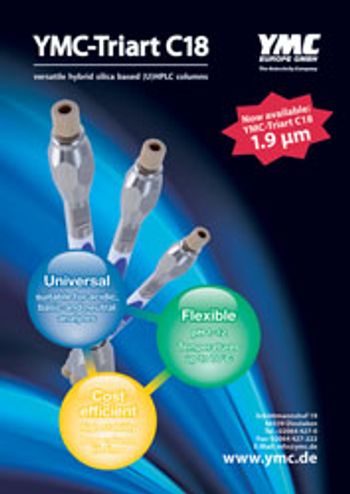
YMC Product Profile

Agilent Profile

Click here to view the complete e-Separation Solutions newsletter from June 2, 2011

An improved method for high temperature simulated distillation based upon ASTM D7169 is presented using the Zebron ZB-1XT SimDist column. This column utilizes a Glass Infusion™ Technology that results in more improved efficiency, resolution, and unmatched column-to-column reproducibility. This technology also allows simulated distillation methods, such as ASTM D6352 and D7169, to be extended from C100 to C120 while still meeting all the system suitability requirements.

Thermo NA - Identification of Metabolites from Maropitant Using a Dual-Pressure Linear Ion Trap Mass Spectrometer and Mass Frontier Software

Upcoming Events

A case of over-recovery of a preservative on ageing of a pharmaceutical product provides a good example of how to approach solving a problem of overlapping peaks in an LC separation.

Converting a method from conventional HPLC to high-throughput HPLC or UHPLC is easy with a method translation calculator. Here's how to use them and where to find them, for free.
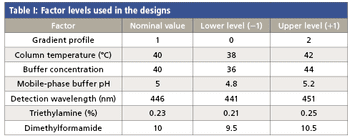
LCGC is planning to publish the next issue of The Application Notebook special supplement in September.
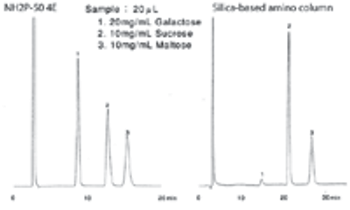
Hydrophilic interaction chromatography (HILIC) has become a popularly used separation mode for carbohydrate HPLC method. There are wide variations in HILIC stationary phase.

As the number of chiral columns and chiral separations has grown, it has become difficult to organize the information for use in developing new methods. The success of chiral method development depends on the introduction of appropriate columns. The RegisPack? polysaccharide-based chiral stationary phase (CSP) is most successful in achieving a majority of chiral separations. However, there are cases in which this proven chiral selector leads to partial or no separation. Excellent separations using the newly introduced RegisPack? CLA-1 CSP have been obtained for a range of compounds, either by improving or complementing RegisPack's selectivity.
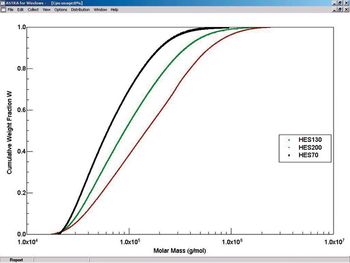
Hydroxyethylstarches (HES) are used increasingly as plasma expanders in medical applications. The HES's circulation time in the blood depends strongly on its molar mass distributions.
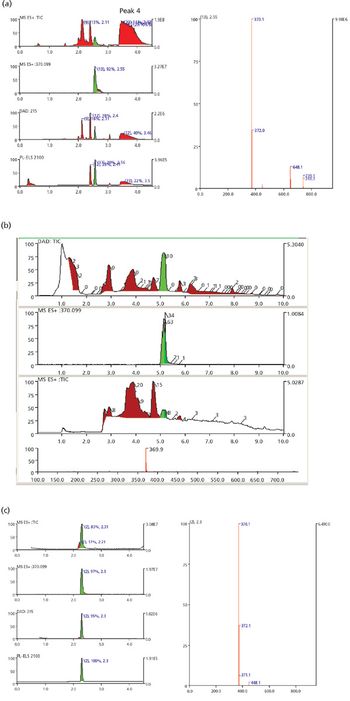
Aggregated singletons for automated purification (ASAP) is a purification workflow that provides singleton sample purification, registration, and delivery to the materials management department as 30 mM dimethyl sulfoxide solutions for biological screening.

Determination of pharmaceuticals in biological matrices is commonly employed in ADME (DMPK), clinical, and forensic analysis. The main techniques used for drug monitoring and analysis are immunoassays, LC, and GC methods.

EMD Millipore, the life science division of Merck KGaA of Germany, has opened a biopharmaceutical technical and training centre in Shanghai, China.

Polyolefin (PO) is the largest volume industrial polymer in the world for making a wide range of commercial products that touch nearly every aspect of our daily lives, such as automobile parts, pipes, packaging films, household bottles, baby diapers, and so on.